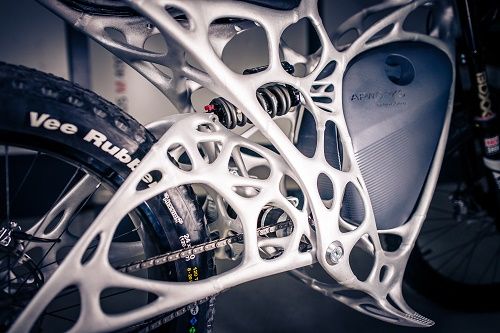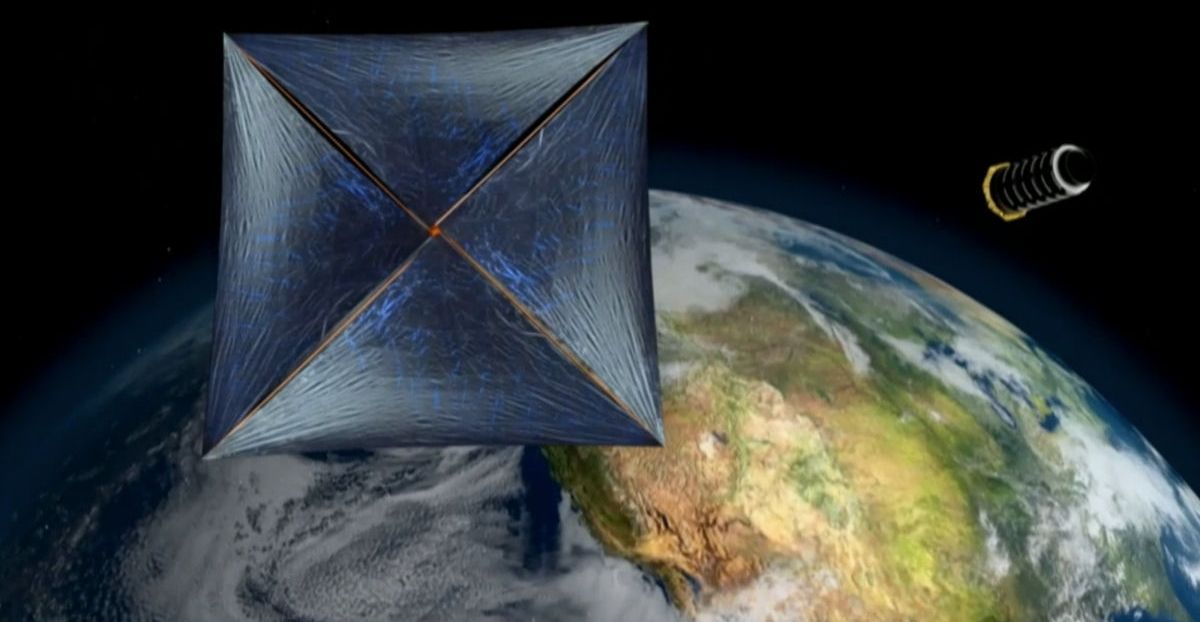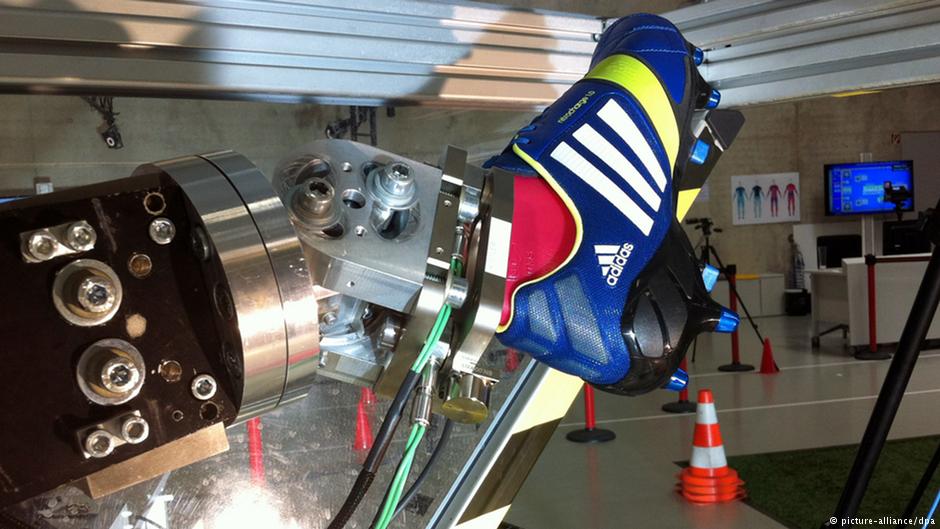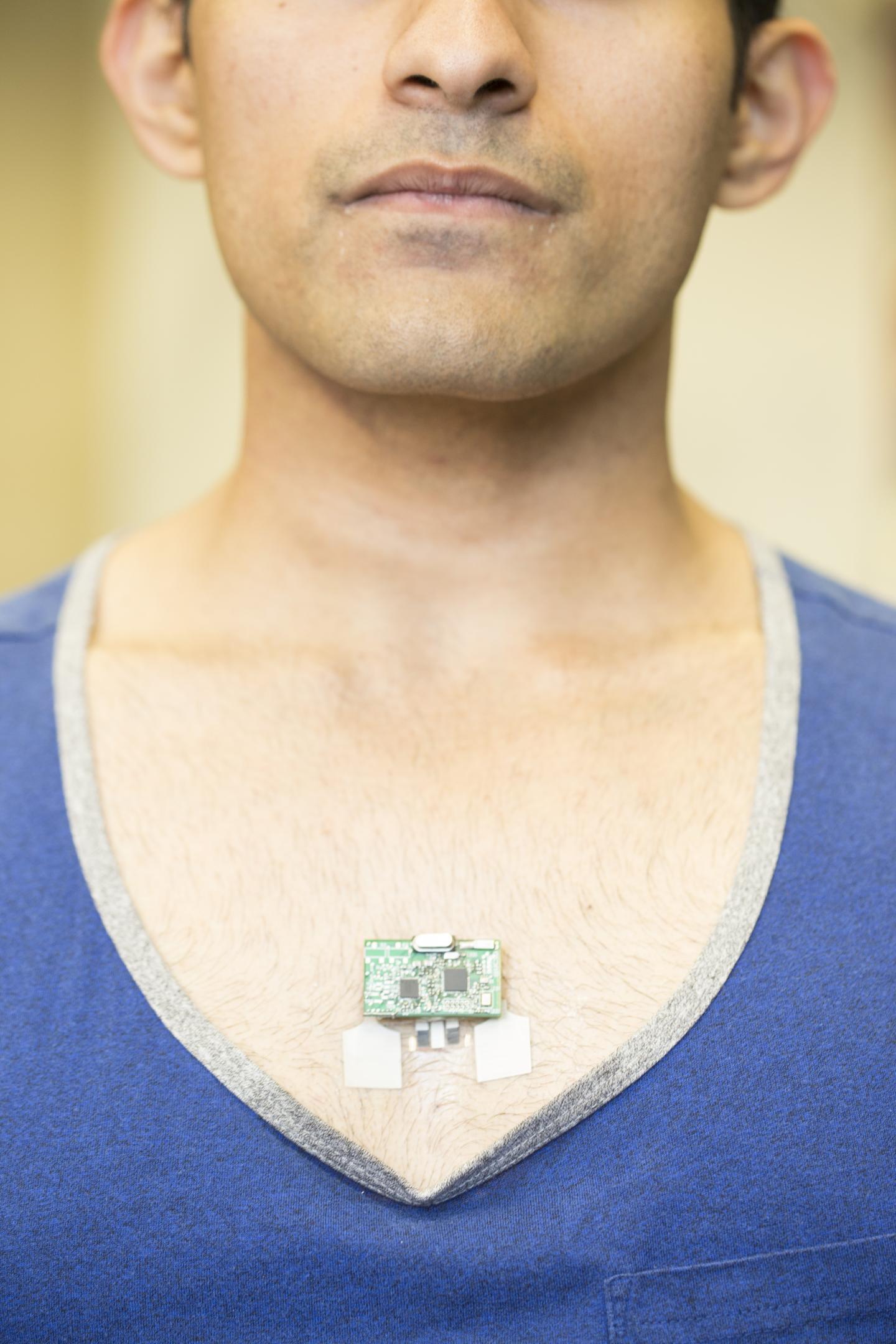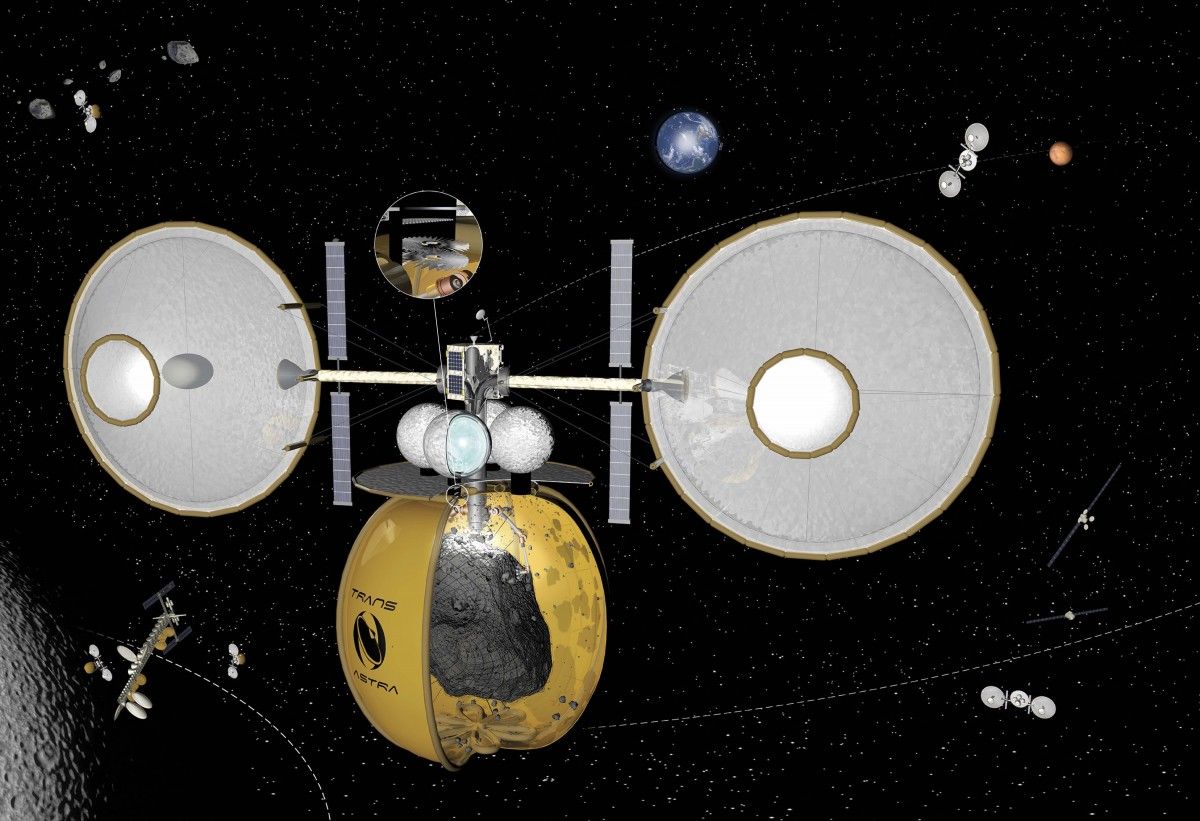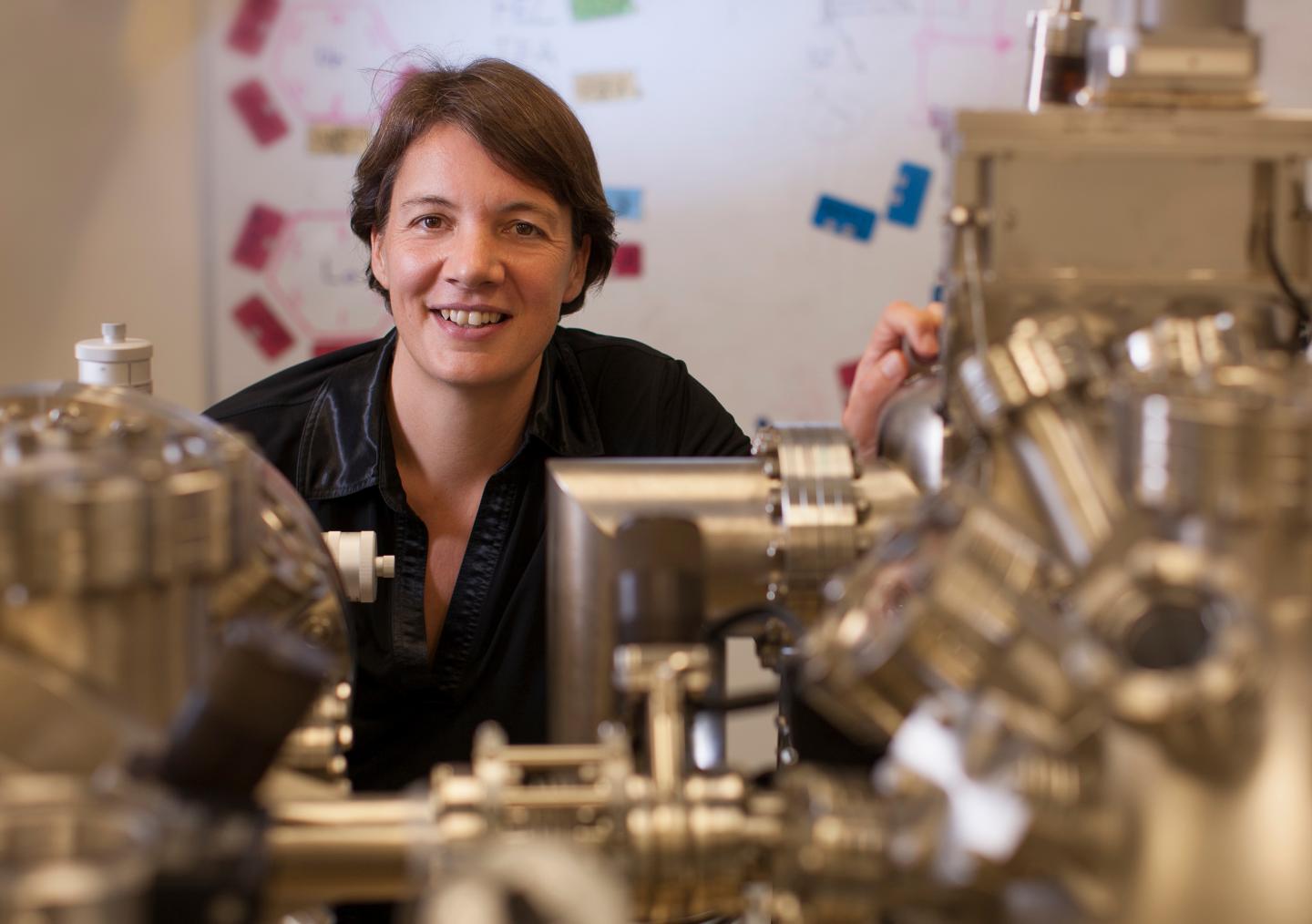Page 11161
May 25, 2016
The Father of Futarchy Has an Idea to Reshape DAO Governance
Posted by Amnon H. Eden in categories: business, cryptocurrencies, governance, robotics/AI
#TheDAO (Distributed Autonomous Organization) is the hottest new form of investment built on revolutionary (Transparency, Democracy, Decentralization).
Our own Robin Hanson has been an inspiration:
“The slogan is vote on values, bet on beliefs. What you need are discreet decisions and then you need an outcome that you care about.”
Continue reading “The Father of Futarchy Has an Idea to Reshape DAO Governance” »
May 25, 2016
Airbus Subsidiary Designs World’s First 3D-Printed Aluminum Motorcycle | Aluminum Insider
Posted by Odette Bohr Dienel in categories: 3D printing, business
“European multinational aerospace and defense corporation Airbus Group SE’s subsidiary APWorks GmbH has developed the world’s first 3D-printed all-aluminium bodied motorcycle.”
May 25, 2016
Lasers Could Blast Astronauts to Mars, Protect Earth from Asteroids
Posted by Klaus Baldauf in categories: innovation, space travel
The same laser system being developed to blast tiny spacecraft between the stars could also launch human missions to Mars, protect Earth from dangerous asteroids and help get rid of space junk, project leaders say.
Last month, famed physicist Stephen Hawking and other researchers announced Breakthrough Starshot, a $100 million project that aims to build prototype light-propelled “wafersats” that could reach the nearby Alpha Centauri star system just 20 years after launch.
The basic idea behind Breakthrough Starshot has been developed primarily by astrophysicist Philip Lubin of the University of California, Santa Barbara, who has twice received funding from the NASA Innovative Advanced Concepts (NIAC) program to develop the laser propulsion system. [Stephen Hawking Video: ‘Transcending Our Limits’ with Breakthrough Starshot].
Continue reading “Lasers Could Blast Astronauts to Mars, Protect Earth from Asteroids” »
May 25, 2016
Adidas to sell robot-made shoes in Germany
Posted by Dan Kummer in category: robotics/AI
Your next pair of Adidas shoes may be put together by robots — the German sports retailer has said it will start selling its first robot-produced shoes in a new, state-of-the-art factory in its home market starting 2017.
The announcement came as Adidas unveiled its prototype “Speedfactory”, a state-of-the-art, 4,600 square-meter facility on Tuesday, meant to automate shoe production, which is largely done manually in Asian factories at the moment.
The new production site in the southern German city of Ansbach is still under construction, but it represents a return to local production for Adidas, which stopped manufacturing shoes in its home market more than two decades ago in favor of Asia.
Continue reading “Adidas to sell robot-made shoes in Germany” »
May 25, 2016
Engineers take first step toward flexible, wearable, tricorder-like device
Posted by Bruno Henrique de Souza in categories: biotech/medical, chemistry, computing, electronics, engineering, mobile phones, wearables
Engineers at the University of California San Diego have developed the first flexible wearable device capable of monitoring both biochemical and electric signals in the human body. The Chem-Phys patch records electrocardiogram (EKG) heart signals and tracks levels of lactate, a biochemical that is a marker of physical effort, in real time. The device can be worn on the chest and communicates wirelessly with a smartphone, smart watch or laptop. It could have a wide range of applications, from athletes monitoring their workouts to physicians monitoring patients with heart disease.
Nanoengineers and electrical engineers at the UC San Diego Center for Wearable Sensors worked together to build the device, which includes a flexible suite of sensors and a small electronic board. The device also can transmit the data from biochemical and electrical signals via Bluetooth.
Nanoengineering professor Joseph Wang and electrical engineering professor Patrick Mercier at the UC San Diego Jacobs School of Engineering led the project, with Wang’s team working on the patch’s sensors and chemistry, while Mercier’s team worked on the electronics and data transmission. They describe the Chem-Phys patch in the May 23 issue of Nature Communications.
May 24, 2016
How To ‘Optically-Mine’ Water From An Asteroid
Posted by Bruce Dorminey in categories: energy, space
A more efficient way to mine water and other chemical volatiles to create rocket fuel in situ is arguably the fastest way to colonize the Moon and Mars.
Despite the recent buzz about eventually mining asteroids for metals, their real near-term value may be as space-based sources of water and carbon dioxide from which to make rocket propellant. The trick is in mining such volatile compounds efficiently enough to convert them to fuel in situ. That is, without having to import such resources from gravitationally-bound, planetary surfaces like the Moon, Mars or even Earth.
Here’s where a potentially revolutionary patent pending process dubbed “Optical-Mining” would figure in. The idea is to use this new technology to excavate both water ices and other volatile compounds from small 10 meter-diameter Near-Earth Asteroids. If successful, such an In Situ Resource Utilization (ISRU) asteroid-mining operation could mark the tipping point in viably extracting resources from thousands of such asteroids.
Continue reading “How To ‘Optically-Mine’ Water From An Asteroid” »
May 24, 2016
Majority of Americans dislike both Trump and Clinton as interest in third-party spikes online
Posted by Zoltan Istvan in categories: geopolitics, life extension, transhumanism
I’m excited to see I’m the fourth most searched 3rd party presidential candidate. Thanks for your support of a science, longevity, and technology platform as an alternative to the establishment. If this continues a nonreligious transhumanist could end up #4 or #5 in the final elections, and even get enough votes (maybe a million or more) to push the US election one way or the other if it’s close.
So much about the 2016 presidential election is unprecedented. But perhaps nothing is more unusual than the electorate’s level of dissatisfaction with both major parties’ likely nominees.
An NBC News-SurveyMonkey poll released earlier this week found that, while Democratic front-runner Hillary Clinton maintains her lead in a head-to-head match-up with presumptive Republican nominee Donald Trump, neither candidate is popular with the public at large.

A friend of mine shared this; very nice.
Designed by fashion icon Iris Apfel, the Wisewear Activity Tracker can count your steps taken, distance travelled, calories burned and more in style. You can even call for help in an emergency just by tapping the device.
May 24, 2016
Top international award for UNSW Australia quantum computing chief
Posted by Karen Hurst in categories: computing, electronics, nanotechnology, quantum physics
Love this; Congrats to Michelle Simmons and her work on QC — Superstar females in STEM.
For her world-leading research in the fabrication of atomic-scale devices for quantum computing, UNSW Australia’s Scientia Professor Michelle Simmons has been awarded a prestigious Foresight Institute Feynman Prize in Nanotechnology.
Two international Feynman prizes, named in honour of the late Nobel Prize winning American physicist Richard Feynman, are awarded each year in the categories of theory and experiment to researchers whose work has most advanced Feynman’s nanotechnology goal of molecular manufacturing.
Continue reading “Top international award for UNSW Australia quantum computing chief” »

